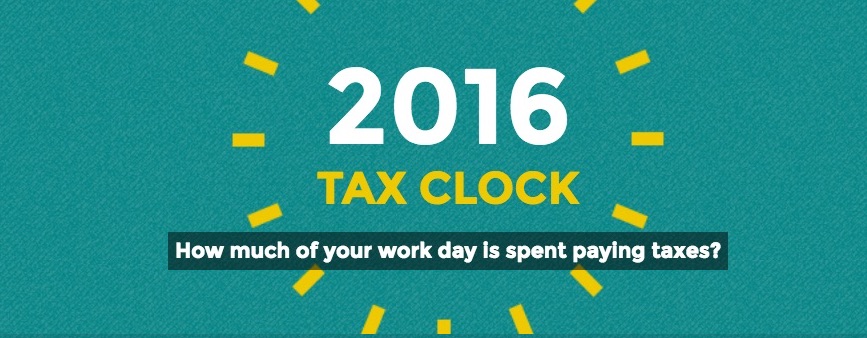Taxclock Budget Tools
Taxclock Budget Tools
Ordinary people often struggle to get their heads around their country’s budget and many pay tax grudgingly as it seems like their hard-earned money just disappears into a fiscal black hole. Yet budgets and tax have a direct effect on ordinary people.
These were issues Code for South Africa set out to address when South Africa’s Minister of Finance presented his 2016 budget in Parliament on February 24. The challenge was to present complicated information in a way that was educational, while also being personal and relevant to individual users.
The results were two simple tools, Tax Clock and Vote for the Budget, which was funded by Code for Africa. Tax Clock incorporates the latest tax tables and allows users to engage with the budget through the money they earn and the income taxes they pay. It does this by tracking how much time they spend each day working to pay tax - and how much time time is spent working for themselves. Adi Eyal, director of Code for South Africa, said: “When the budget comes out, people are usually only interested in how much they will be paying and if there are any rebates they can get. But they don’t engage with what the budget is really about. So it’s important for people to understand what they are working for.”
The Tax Clock was shared with media house partners who have journalists enrolled in Code for South Africa’s new data journalism academy. They were given the clock exclusively to use on their various titles’ websites for a week, after which it was released into the wild as a free embed, allowing anyone who wanted to, to publish it.
A second tool, Vote for the Budget, was developed in partnership with the International Budget Partnership (IBP) to give ordinary people a voice in how their taxes are allocated. The tool incorporated a list of the five biggest programme winners and five biggest losers in the 2016 budget allocations, as well as a “wish list” of projects not in included in the budget. Vote for the Budget went live as Gordhan began speaking in Parliament and allowed users to drag and order the “winners” and “losers” allocations according to what they thought were the most and least important priorities. Users could then generate an email that sent their choices directly to Parliament’s Appropriations Committee, which has a final say on allocations from the budget. “This tool was all about enfranchisement: democracy is not just about voting every five years. It is about active engagement and knowing you have a say and the power to help make changes. In this case there was an appropriations committee that was going to evaluate the budget and they needed input, not just from a select few but from the whole nation,” says Eyal.
The tool, which was promoted widely by partner media and through social media and other networks, was kept live for several days for people to make submissions. Once submissions were closed IBP and Code for South Africa summarized all individual submissions and submitted a report to the committee a few days after the budget had been tabled.
Lessons Learned
It took several weeks of building the tool and developing content before the tools went live. Embeds were also provided to partner media houses to test to ensure they worked in their CMSs, ensuring a flawless going-live process on the day. A strategy was also formulated for the release and marketing of the tools, with social media playing a key role. Importantly, the entire exercise was a rich learning exercise for everyone involved and established protocols for Code for South Africa to follow for future projects.
Says Greg Kempe, Code for South Africa’s Head of Technology, that both tools had taught the Code4SA team a lot about how to collaborate effectively. “The biggest learning point for me on both tools was being very creative with what is a very dry subject matter: budgets. By focusing on a very specific aspect of a large dataset, we made that aspect approachable, relevant and personal.” But, as with any tool or story, the user experience must always come first, says Kempe: What do we want the user to get out of this, any why? “Only once we understand that can we explore the how,” says Kempe. All software is inherently iterative and news tools are no different, he says. “We don’t quite know what we want until we’ve built it, but we don’t know what to build until we know what we want. So we break this stalemate by building something, comparing it against our goals, making adjustments. At the same time we’re honing our idea of how the user will benefit. Ideas are tried, tweaked, mashed up and discarded continuously.” But he warns that working with a team means that opinions and feedback are always varied, so it’s important to have one person who can guide the group to a final decision, break stalemates and have the final say. And he warns that it’s important not to take anything for granted. “As data geeks, we love exploring data and assume everyone else does, too. Once we accept that isn’t true, we can use our understanding and expertise to help a reader be more informed by guiding them through a complex issue and making it relevant to them. “At the end of the day, it’s only the user (or reader) that counts. If we’ve failed them, we’ve failed completely.”



